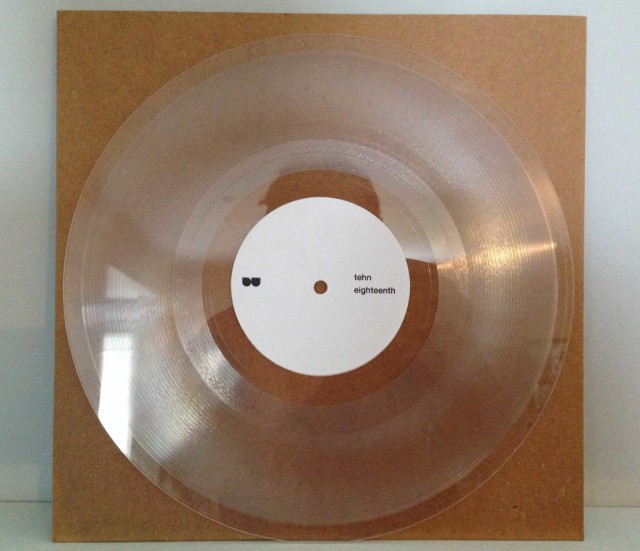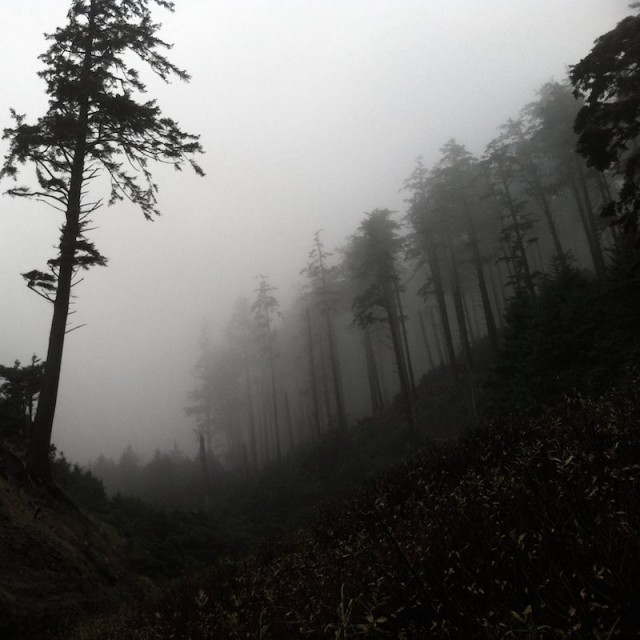Brian Crabtree, alongside partner Kelli Cain, nicely exemplifies a lot of this site’s raison d’être over the the past ten years. Artmaker and toolmaker are indistinct roles; they’re both flipsides of the act of making.
The monome, the invention for which Brian is best known, is at first blush nothing more than a box of buttons. It’s even lifeless until connected to a computer. But in its design is a statement that draws a thread from the design of tools to the design of music. Ideas about compositional technique are embodied in the software; notions of aesthetics are evident in every detail of construction, material, and sourcing. The same is true of its successors, arc and the ultra-limited aleph.
This is a tool that is also a sculpture – music made into an object. (The Museum of Modern Art and LA County Museum of Art each took notice. But maybe it’s more important than a community of musicians did.)
In other words, Brian has been doing what composers do. He’s been externalizing ideas about design and aesthetic, encoding messages about what beauty is.
In some ways, though, you need that musical soundtrack to fully decode the message. And so it’s significant to me that we have some of Brian’s first recorded music in a long time. (He’s been active in live performance, but hasn’t committed anything to an ‘album,’ as such.)
The results are beautiful, organic. Not one but two outings have debuted this summer. There’s skyclad, a four-track EP on The Leap, a label based in Boston and Santa Fe that pairs live events with releases and podcast. (It’s no stranger to the monome community.) And there’s eighteenth on Detroit Underground – a second EP.
skyclad journeys effortlessly from natural landscape to fuzzy electronic waveforms, as if a set of synthesizers was captured, timelapse-fashion, growing out of a mossy forest floor. Rhythm and form are leisurely, informal – the one pulse (on “iii”) sounds as much like a heartbeat or excited gait, while other melodic parts wend in and out freely. Some sounds are literal, field recordings and birdsong. But by the time “iv” arrives, it seems just as logical to substitute the electronic for the aviary.
weathervane from kelli cain on Vimeo.
Skyclad is lovely, naive by design. Eighteenth is more sophisticated in its textures, not only more densely-layered but shifting more subtly. “weathervane” may come from cold, but warms like the inner glow from sitting next to a space heater – even if it was “written during two different spells of freezing weather. silver skies, found melodies, static wash, roofs collapsing.” Melodies are deconstructed into piled layers of buzzing fabric. Electric shapes gather in hives of activity, ambient spaces that are nonetheless full of perpetual motion.
“eighteenth” is more what you might expect of tehn, delicate sliced-up chimes. But if the slicing techniques and cosy pads are predictable, the result is transcendent, a mournful blanket of looped samples, bobbing slowly like the memory of a sea.
eighteenth from kelli cain on Vimeo.
Kelli Cain’s videos are somehow the perfect aesthetic frame for the music. (Kelli is, in monome circles, just as well known as Brian, an ever-present partner in the project’s unrelenting perfectionism.) The material is unremarkable out of context – it could be nicely-shot BBC footage of Earth – until you add the sound. Then, but they’re worthy objects of meditation, impossibly synced to the natural flow of the music.
As the quote goes:
and then the trees gathered
speaking slowly with shimmering intensity
all in perfect agreement
We’ve had no absence of tehn on this site, but it’s the first time we get to talk about a significant music release. Knowing how outspoken Brian could be, I was thrilled.
CDM: First – wow; this made me smile.
“geologic time, paper, artisanal computer code, irrational rhythm, collected grasses, magnetic tape, resistor-capacitor networks, the arch druid”
Nice turns of phrase.
Brian: yes. calling code “artisanal” makes me laugh and also pretty nauseous. i’m very wary of technical hand-waving as a way to validate or distract from actual substance. hold on while i make myself an artisanal peanut butter and jelly sandwich.
What’s the tool set here? (mlr [the sample-cutting Max patch popularized with monome] seems to make an appearance, of course, but specifically…)
mlr is the main instrument on only one track (eighteenth) which was recorded in 2008. these days i tend to use it more sparingly and as a processor, to create layered rhythms of harmonies over more deliberate instruments. it was almost 15 years ago i started exploring this form of live cutting– i’m actually a bit surprised i still find new methods and sounds coming out of it. though it’s certainly still indispensable while playing live.
the foundations of almost all of these recordings began with working out progressions and collections of notes on a piano, distilled onto scraps of paper which were typically impossible to decipher later. i feel this is a very important stage, giving solid direction when exploring different synthesis and processing.
Are they improvised, as such? What did it mean to “commit” them, as you say, to these recordings?
improvisation plays a role, certainly. but noodling with a computer is quite different from a trombone. skyclad ii is fully improvised in a sense, but it’s perhaps better described as generative. the application i made (meadowphysics) to create it is a form of precomposition, the notes and modulations carefully chosen, yet this was a live take where i was consciously modulating the rule set with the grid.
See meadowphysics in action here:
meadowphysics from tehn on Vimeo.
It’s been a while, of course… what made you decide to make this move back into committing recorded music now?
though i’ve been consistently trickling out single tracks and live recordings, it’s been about a decade since i released music as a full collection. improvisation had a lot to do with it. when the grid came into my practice i was suddenly able to rapidly produce immense variation on small musical thoughts– a tiny precomposed framework could be performed so many different ways that deciding on a single recording would be a bit paralyzing– how would i even know which was best? what does good even mean? discovery in performance, sharing, recognition?
time is very powerful– music making after taking a long break feels quite different. i was able to forget a lot of habits and let go of some previous obsessions. like somehow now i can work more deliberately.
Can you say anything about the distribution channels for this music? That’s been significant to the hardware you design, too. It was nice, for instance, for me to get the EP via Detroit Underground’s Drip.fm [a label-specific subscription service].
distribution, let alone the act of just getting heard remains a mystery to me. i’m grateful that we have people committed to promoting and sharing new music– most artists i know (myself included) are horrible at self-promotion.
Yes, guess that’s my job. How are you finding music?
i still tend to rely on recommendations from friends– though the ability to hear almost any music with a few clicks makes this a very different experience.
Returning to making music, what’s the significance of the tools you’ve made… or that others have made? (I know this matters a lot to me with our own MeeBlip… and also knowing and being neighbors here with Ableton, Native Instruments, Liine, MFB, TouchAble, etc.)
making tools for me is way to get more precise results, or to produce something otherwise difficult or impossible. the aleph distills many sound experiments into a playable instrument. rather than setting up a complex chain of software i can just turn it on and everything goes, which is important for trying to stay in a moment rather than shifting to engineer/programmer brain. often when a discontinuity like this happens i get preoccupied with redesigning the tool, and that’s not conducive to actually finishing music.
randy jones’ [Madrona Labs] aalto is used a few times– it’s the only soft synth i use these days. the sound is amazingly organic. the only other new-ish instrument used is the [Teenage Engineering] OP-1, which is really a sketching and idea-capture tool. it’s so tiny– fits under the bed or anywhere. the old reliable machines are on there of course– [Roland] juno 106, [KORG] ms-20, [Roland] space echo.
As far as the music, I love this sort of free-flowing feeling, even apart from the improvisation… there’s a relationship of noise to melodic elements, almost as if these note materials are themselves part of the soundscape. How do you conceive these different materials? Is there a compositional frame in mind?
in weathervane there’s a persistent field recording of our barn roof being disassembled. the scattered rhythms of cedar shakes hitting the ground get paired with pulsing synth polyrhythms and also stand in as a replacement for hi-hats. a synthesized static wash emulates parts of the same field recording. later the melodic and harmonic material gets woven throughout, creating an interplay but also making space.
also pertaining to nature/noise, on skyclad i the rhythmic foundation is a bunch of dry grasses getting shaken. a close listen reveals these super-granular slow-attack little clouds, which to me were far more interesting than some of the software-based rhythms i was trying to make.
Like me, you’ve come from some more traditional training in music. I find that preparation means something very different to me now with some distance from it, years after the composition lessons and so on, than it did when I was in the middle of it. What have you kept around? What have you discarded? What has resurfaced?
i feel fortunate to have been shown many different directions. school was less about rules and more about finding out what’s happening and what people have been exploring for decades. i think what’s stayed with me is a respect for the many people who have come before us, and constantly attempting to comprehend and appreciate these foundations that we’re all trying to build upon.
Thanks, Brian. Find this – and more music from tehn – here:
tehn – eighteenth @ Detroit Underground [digital/vinyl]
Skyclad on The Leap [Bandcamp digital]
http://nnnnnnnn.org – tehn site


